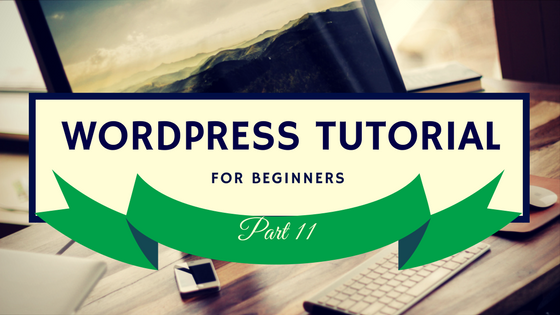After completing the previous tutorial from our WordPress Tutorial for Beginners.
SEO stands for Search Engine Optimization. It’s simply a strategy used to get more traffic to your website by ranking higher with search engines.
It’s mainly writing articles that are SEO optimized that makes it easier for search engines to understand the content of your article.
So when people are searching the web for a particular topic, your search engine optimised content will appear higher in the search results and as a result a higher chance of people clicking through to your website.
Why SEO is important
Other than social media sites, search engines are a big source of traffic for most websites. Google, Bing and other search engines use advanced algorithms to understand and rank pages appropriately in search results.
If your content isn’t optimised, then search engines won’t know how to rank it. When people search for the topics you write about, your website won’t appear in the search results, and you’ll miss out on the chance of getting traffic to your site.
SEO Plugin
There is a plugin for everything, the main two plugins for SEO are “Yoast SEO” or “All in One SEO Pack”.
They are both good, with loads of documentation on how to use them.
Add XML Sitemaps
The XML Sitemap is a specially formatted file that lists every single page on your website. This makes it easy for search engines to find all of your content.
There are plugins to create the sitemap and keep it up to date for you. If you are using “Yoast SEO”, it will create and keep update to your sitemap.
While adding an XML sitemap does not boost your site’s search rankings, it does help search engines find the pages quickly and start ranking them.
To find your sitemap, just go to your URL and add “sitemap_index.xml” to the end like the below link.
http://yourdomainname.com/sitemap_index.xml
Add Your Site to Google
Google Search Console also known as Webmaster Tools is a set of tools offered by Google to give website owners a look at how their content is seen by the search engine.
While in the Google Search Console add your website by clicking “Add a new Property” then in the popup enter the URL of your website and click “Add”.
Once you have added your website to Google Search Console, click on the Crawl menu and then select “Sitemaps”. Then click on “Add Sitemap”.
Enter your sitemap, then click “Test” and then “Submit”. After a few hours, you would be able to see some stats about your sitemap.
It provides reports and data to help you understand how your pages appear in search results. You also get to see the actual search terms people are using to find your website, how each page appears in the search results, and how often your pages are clicked.
Optimise Your Blog Post
SEO is an ongoing process that you must keep up with if you want to see maximum results. We recommend that you optimise your title and description to get maximum clicks.
“Yoast SEO” allows you to add a title, description, and focus keyword to to every blog post and page. It also shows you a preview of what users will see when they Google your website.
When writing your blog post, simply scroll down to the Yoast SEO section and take full advantage of it. Do a little research on keywords, there’s plenty of resources online that goes through this in great detail.
Optimising Images in WordPress
Images are great to have with your text but they also take more time to load. If you are not careful with image sizes and quality, they can slow down your website.
WP Smush plugin with resize, optimise and compress all of your images, helping the overall website performance.
Also to optimize your images for search engines is to use a descriptive title and alt tags. These tags help search engines understand what your image is about.
Optimise Your Site’s Speed and Performance
Your website’s performance is important as if it’s takes more than a second to load your page, visitors will leave within few seconds of visiting a website.
That means that as a website owner, you only have a few seconds to present your content and engage users. You don’t want to waste this precious time making your visitor wait for your website to load. Search engines like Google admit that they rank faster websites higher than slow loading websites.
Wrapping Up
So for now, that’s it. If there is any feedback or suggestion please feedback to leave a comment below.

